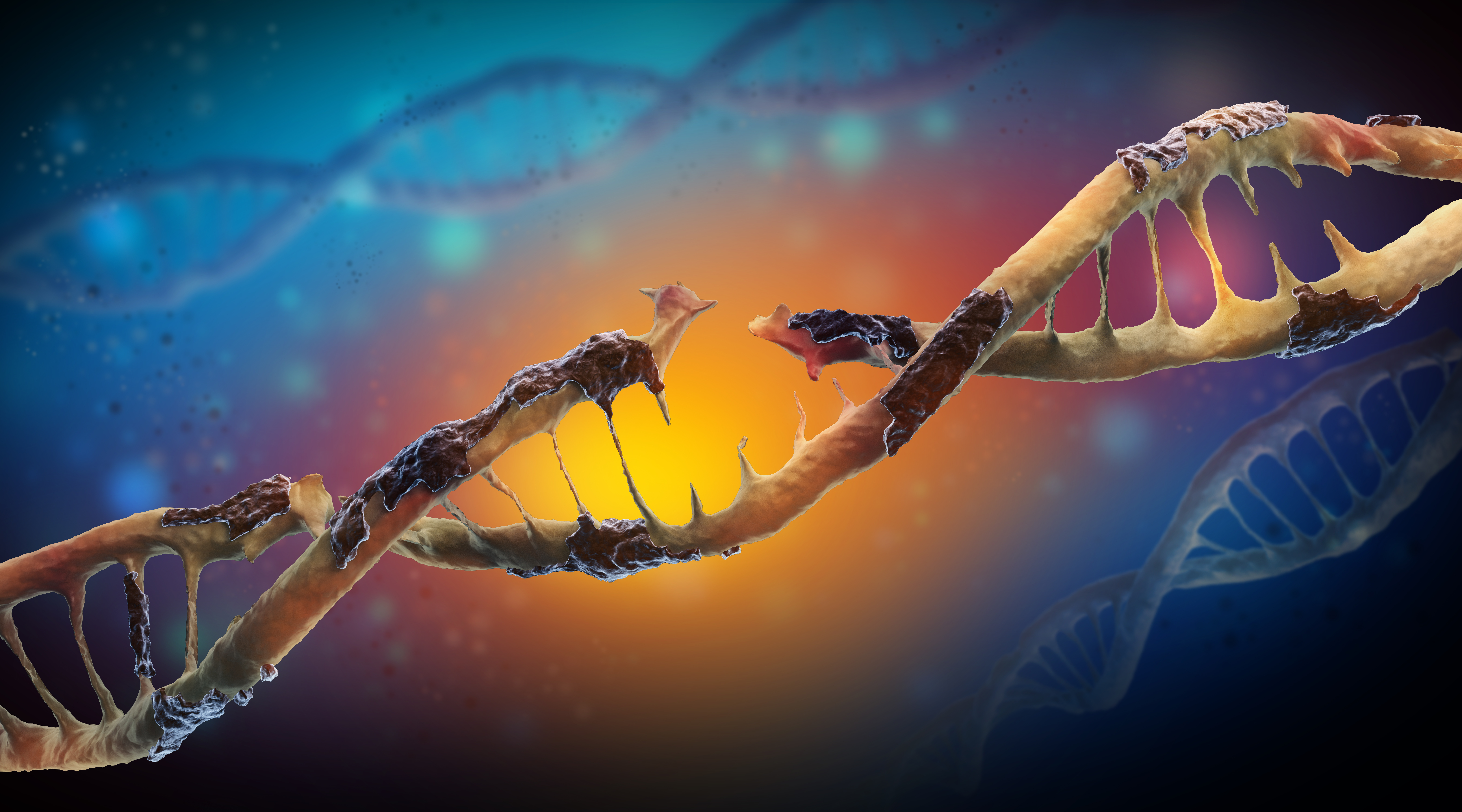DNA REPAIR MECHANISMS INVALIDATE DARWIN’S THEORY OF EVOLUTION

DNA REPAIR MECHANISMS INVALIDATE DARWIN’S THEORY
For genetic information to survive, the DNA sequence of each cell’s genome must not change. But numerous errors in normal cellular processes such as DNA replication, reactive metabolites, and environmental agents damage DNA constantly. Tan and Stadler provide an accounting of daily DNA damage, “Every day, the DNA in a typical human cell faces an estimated 2,000-10,000 depurinations, 600 depyrimidinations, 10,000 cases of oxidative damage, 55,000 single-strand breaks, and 10 double-strand breaks.”[1] Fortunately, DNA repair mechanisms are present within DNA, and only 1 in 1,000 errors result in permanent damage.[2] These repair mechanisms are extremely complex which begs the question, is it likely that these complicated DNA repair mechanisms were created by Darwin’s natural selection of random mutations?
To begin our discussion, there are three basic types of DNA damage: 1) mispairing, 2) chemical alterations, and 3) environmental damage. First, nucleotide bases are often mispaired. Nucleotide bases are either purines (adenine or guanine) or pyrimidines (thymidine or cytosine). A purine base can be replaced by another purine base, or pyrimidine base by another pyrimidine base. This is called transition mutation. If a purine is replaced by a pyrimidine (or vice versa) this is called transversion mutation. These types of mutations can occur once in every 105 or 106 base pairs.[3]
Next, intracellular and extracellular agents may cause chemical alterations to DNA. As an example, depurination accounts for a loss of 18,000 bases per cell each day, and deamination accounts for 500 bases lost each day.[4] Numerous alkylating agents and oxidizing agents lead to mutations which must be corrected.
Lastly, the environment is unfriendly to DNA. Ultraviolet light and ionizing radiation (such as x-rays) damaging our DNA daily and must be dealt with daily.
Amazingly, we go about our daily lives completely (and thankfully) unaware that our DNA is constantly under attack. But our DNA is busily repairing itself. In this paper I describe five repair mechanisms. Each repair mechanism represents a section taken directly from the textbook Molecular Biology (University Press, 2014.) The first three of these mechanisms involve repair of one of the two strands of DNA, where there is a remaining intact strand that acts as a template for repair of the complementary strand. The remaining two repair mechanisms occur where both strands of DNA are damaged.
I POST-REPLICATION MISMATCH REPAIR
Post-replication mismatch repair corrects errors in newly synthesized DNA rather than repairing damage inflicted by the environment. The first of these is proofreading. Proofreading is a tedious process. It is tedious because so much is involved, and the proofreader must be very attentive. He or she must understand the subject, know the correct grammar, and be aware of and be able to manipulate a lot of information. How does DNA do all of this? Proof-reading occurs as DNA is synthesized. Since DNA is a double strand, the newly synthesized strand has a template to follow so that an incorrect or damaged strand can be identified using the original strand.
There are three mechanisms for mismatch repair to occur: recognition of the mismatched base pair, removal of the incorrect nucleotide, and finally resynthesis using the original DNA strand as a template. As you can imagine (unless you would rather not know), these mechanisms require complex molecular biology. Mismatch repair consists of several mutation proteins that recognize mismatched base pairs and interact with sliding clamp components of the replisome that assemble at the site of mismatch.[5] Simple right?
It becomes obvious there is nothing simple about this repair process. Amazingly, it requires multiple specific structures with interdependent functions that must be performed correctly, or the error becomes worse. Defects in mismatch repair results in disease.
But mismatched base pairs is not the only kind of error that occurs during DNA synthesis. In slipped-strand misreplication, sequences of DNA may be expanded too far or deleted altogether. As an example, slipped-strand replication errors are present in genes that encode proteins needed for brain function and underlie neurodegenerative diseases.[6]
Next, I would like to discuss how repair occurs after physical damage.
II REPAIR OF DNA DAMAGE BY DIRECT REVERSAL
DNA damage can occur by adding a methyl group where it does not belong—called DNA methylation. Methyl groups may be inappropriately added to the DNA backbone. A methyl group added to the nucleotide base guanine produces methylguainie. Repair occurs when this abnormal DNA methylation is reversed by specialized methyltransferases, which recognize the abnormal structures and enlist specialized repair enzymes called alkyltransferases that reverse the damage by removing the methyl group.[7] Once again, we see a large amount of information is required for this process.
Another group of proteins remove damaged nucleotide precursors before they have a chance to be incorporated into DNA. This occurs when hydrolases recognize damaged nucleosides and convert them to molecules that cannot be incorporated into DNA. Failure to do so may result in cancer.[8]
Simple again, right? I’m very suspicious this could happen over eons via mutations within the DNA that is coding for the very repair mechanisms it needs to survive. As of today, no Neo-Darwinist has demonstrated what nucleotides mutated from what to what to produce these complex three-dimensional molecules that participate in these intricate repair mechanisms.
III REPAIR OF DNA DAMAGE BY BASE EXCISION REPAIR, AND NUCLEOTIDE EXCISION REPAIR OF BULKY LESIONS
Base excision repair occurs when a single damaged nucleotide requires replacement; whereas nucleotide excision repair occurs when there is a stretch of nucleotides to be excised and replaced. In both cases the complimentary strand of DNA serves as a template. In each case, numerous enzymes are tasked with recognizing the error then cleaving the incorrect nucleotide/nucleotides and filling the gap. There are multiple proteins that search for and identify the damaged DNA, cleave the appropriate bonds on either side of the site of damaged DNA, then cut away the damaged DNA and finally fill the gap with newly synthesized DNA.[9] (Each of the italicized terms indicates a specific three-dimensional molecule with a specific function and complicated process).
It is difficult to overstate how complex DNA repair is. A single paragraph in the 900-page molecular biology textbook gives a glimpse of the overwhelming complexity:
In nucleotide excision repair, specialized proteins scan DNA and recognize most types of bulky lesions by sensing changes in the deformability of the damaged DNA. Following DNA strand separation when a lesion is recognized, a specific nuclease nicks the DNA backbone upstream and downstream of the lesion, releasing a damage residue-containing oligonucleotide. DNA that is complementary to the undamaged DNA strand is then resynthesized.[10]
Every repair molecule is coded within the very DNA they are repairing. The following is a list of key components (task and proteins responsible) of the nucleotide excision repair machinery:
TASK PROTEINS RESPONSIBLE
1) Damage recognition XOC-RAD23B, XPA, RPA1-3
2) Transcription-coupled repair CSA, CSB
3) DNA unwinding XPB, XPD
4) 5’ Excision of damaged site XPF, ERCC1
6) 3’ Excision of damaged site XPG
7) Repair DNA polymerase Pold and Pole.[11]
The DNA code is intact and functioning when a sperm fertilizes an egg. At the time of fertilization, the DNA repair engineering has already been done. Is it reasonable to believe this complex biomolecular machinery was created by random mutations when all the molecules are interdependent? Neo-Darwinists believe that ever-changing DNA due to mutations leads to more complex code but neglect the stark reality that the consequences of mutations are disease, disability, and death. DNA is far too complex to tolerate random mutations.
The next two repair mechanisms occur where both strands of DNA are damaged. It is interesting that these mechanisms are also responsible for normal biological processes especially those involving adaptation of the immune system. Normal adaptation requires many mediating proteins, which highly complicates the process. It is imperative that the repair is done correctly or else damage and disease result.
IV DOUBLE-STRAND BREAK REPAIR BY NHEJ (NON-HOMOLOGOUS END JOINING)
The process of NHEJ occurs by rejoining broken DNA ends via two pathways. In the first pathway the broken ends undergo limited processing. This includes the loss of a few base pairs with the two blunt ends being ligated together. This is the less complicated of the two, but the “limited processing” harbors a multitude of complex chemistry and three-dimensional molecules that each have specific jobs, and which must be encoded in the very DNA it is repairing.[12]
The second pathway occurs when resection produces short complementary regions that occur anywhere in the tails. The tails then base-pair after which they are trimmed, and gaps are filled in by repair polymerases. Then the ends are ligated. As you can infer, the NHEJ pathway requires end-binding and ligating proteins. This process utilizes a protein called Ku, which binds broken DNA ends and recruits nucleases, polymerases, kinases, phosphatases, and ligases that are crucial in mediating the repair pathway.[13]
Once again, we see a highly complex system that requires numerous three-dimensional molecules with specific structure and function. Is it plausible to believe these interdependent structures and systems evolved by the natural selection of random mutations within DNA that cannot tolerate error?
V HOMOLOGY-DIRECTED REPAIR OF DOUBLE-STRAND BREAKS
This extremely complicated repair mechanism utilizes a template to improve accuracy. Homology-directed repair exploits the availability of homologous sequences found elsewhere that serve as a template. The template is either a sister chromatid (one half of a duplicated chromosome that occurs when the DNA molecule is copied during replication) or a homologous chromosome (a set of one maternal and one paternal chromosome that result from fertilization).[14]
To complete this repair process involves a four-steps: 1) a single-stranded DNA must be generated at the site of a double-strand break, 2) one of the single-stranded ends must be paired with an intact duplex, 3) the damaged duplex is repaired by DNA synthesis, and finally 4) separation of the duplex into repaired finished product.[15] This process requires numerous specialized proteins that have specific functions which arise from their three-dimensional structure—all encoded within the DNA being repaired. The complexity of these five processes is overwhelming.
CONCLUSION AND FINAL REMARKS
Neo-Darwinists face a dilemma. As James Watson states, “There is instead, a strong advantage in there being a small but finite mutation rate; it provides a constant source of new variability, necessary to allow plants and animals to adapt to a constantly changing physical and biological environment.”[16] But he goes on to admit the mutation rate must be “necessarily rare.”[17] It cannot be both necessary and necessarily rare. DNA is far too complex to survive random mutations, otherwise rare mutations would not require repair.
Common sense tells us that these complicated mechanisms could not have occurred by random mutations. The burden of proving Darwin’s theory lies with Neo-Darwinists who suspend common sense as they cling to Darwin’s theory. Neo-Darwinists are faced with a huge conundrum that Tan and Stadler illuminate, “DNA repair mechanisms could not have evolved without the protection of DNA repair mechanisms. And ordinary DNA could not have evolved before DNA repair genes evolved.”[18] Ironically, the Neo-Darwinist argument is a faith argument. They hope that one day science will fill in the gaps of Darwin’s theory. This is “Darwinism of the gaps,” and it will remain a faith argument until they can demonstrate which nucleotides mutated from what to what to produce five complex DNA repair mechanisms.
[1] Change Laura Tan and Rob Stadler, The Stairway to Life: An Origin-of-Life Reality Check, (Change Laura Tan and Rob Stadler, 2020), 136.
[2] Nancy Craig, et. al., Molecular Biology: Principles of Genome Function, 2ed (Oxford: University Press, 2014), 587.
[3] Id., 588.
[4] Id., 589.
[5] Id., 592.
[6] Id., 593.
[7] Id., 594.
[8] Id., 595.
[9] Id., 596.
[10] Id., 597
[11] Id., 598.
[12] Id., 629.
[13] Id., 630.
[14] Id., 631.
[15] Id.
[16] James Watson, Molecular biology of the Gene, 6th edition (San Francisco: Cold Spring Harbor Laboratory Press, 2008), 13.
[17] Id.
[18] Tan, 138.

Leave a Reply